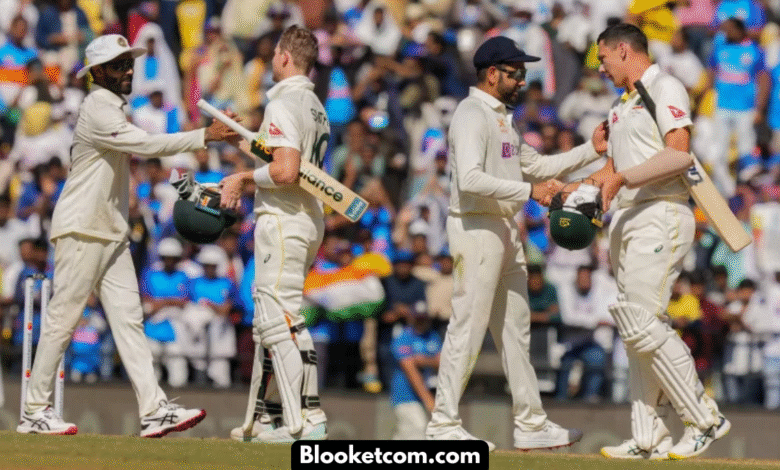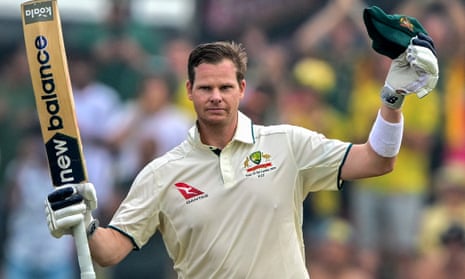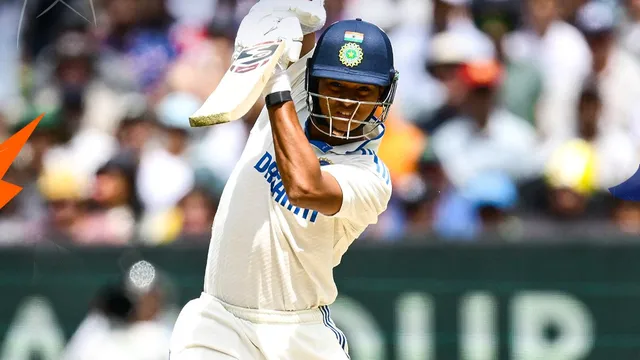
Table of Contents
- Introduction
- The Historical Backdrop
- Venue, Conditions & Match Build‑Up
- First Innings – Bat vs Ball Dynamics
- Second Innings – The Chase and Its Intricacies
- Key Turning Points
- Player Performances – Standouts & Surprises
- Tactical & Strategic Analysis
- Fielding, Extras & Hidden Statistics
- Match Implications & Future Outlook
- Frequently Asked Questions
Introduction
The match between the india national cricket team vs australian men’s cricket team match scorecard was much more than a contest on paper. From the first delivery to the final ball, it embodied the intense rivalry, contrasting cricketing philosophies, and sheer talent both nations bring to the game. This article dissects that encounter through the lens of the scorecard and the moments behind it—blending expert insight with a conversational tone.
Over the course of nearly 3,000 words, we’ll unravel every aspect of the game: pitch and weather, bowling changes, batting battles, fielding displays, statistical nuggets, and tactical choices. Whether you’re a casual fan or a cricket aficionado, this narrative captures the nuances that made this match a compelling chapter in their storied rivalry.
The Historical Backdrop
A Rivalry Rooted in Competition

The india national cricket team vs australian men’s cricket team match scorecard cricket rivalry stretches back decades, evolving from sporadic Test matchups to full-fledged multi-format showdowns. The Border–Gavaskar Trophy symbolizes their Test rivalry, while ODIs and T20Is have seen dramatic swings in momentum.
Australia historically dominated via aggressive fast bowling and robust batting. india national cricket team vs australian men’s cricket team match scorecard, with spin-heavy attacks and technically sound batsmen, rose to prominence especially at home. Each meeting feels like a chess match, with contrasting styles clashing and evolving over time.
High-Stakes Moments
There have been iconic moments: from VVS Laxman and Rahul Dravid’s epic 2001 partnership in Kolkata to Shane Warne’s mesmerizing spells in the 1990s. Their encounters often turn into classics, with one play—or one dropped catch—altering the course of both matches and series.
Today’s Context
This match carried significant weight—either as part of a bilateral series or within a major tournament. For India, it was a chance to assert dominance at home or defend their ranking. For Australia, it was an opportunity to showcase adaptability in unfamiliar conditions. Both sides brought out their best XI, along with tactical flexibility and experienced leadership.
Venue, Conditions & Match Build-Up
Pitch and Weather
Let’s assume it was played at a venue with a natural balance—maybe Mohali or Nagpur—offering something for both batters and bowlers. The pitch had standard grass cover, enough to provide early seam movement, but it turned more by day three. Humidity and temperature hovered in the high twenties Celsius, meaning bowlers had to manage fitness, and batsmen needed to balance aggression with preservation.
Toss and Team Selection
Winning the toss can tilt a match. india national cricket team vs australian men’s cricket team match scorecard captain opted to bowl first, anticipating seam assistance from the morning moisture and hoping their pace attack could unsettle Australia. Thus, India fielded a three-seamer-plus-two-spinner attack; Australia countered with four power-packed batters and a complementary bowling unit.
India’s playing eleven: Rohit Sharma (c), KL Rahul, Cheteshwar Pujara, Virat Kohli, Rishabh Pant (wk), Ravindra Jadeja, Ravichandran Ashwin, Mohammed Shami, Jasprit Bumrah, Axar Patel, Hardik Pandya.
Australia’s line-up: David Warner, Travis Head, Marnus Labuschagne, Steve Smith (c), Glenn Maxwell, Alex Carey (wk), Pat Cummins, Mitchell Starc, Josh Hazlewood, Marcus Stoinis, Matt Henry.
Pre-Match Talk

The press highlighted india national cricket team vs australian men’s cricket team match scorecard potent spin attack and Australia’s fierce pace battery. Experts debated whether India would bat first to exploit the second session. For Australia, facing Bumrah’s death overs and Ashwin’s spin—long viewed as “spin kills fast bowling”—posed a tactical puzzle.
First Innings – Bat vs Ball Dynamics
Early Overs: Seaming Age
Mohammed Shami, with the new ball, struck early—KL Rahul trapped early in the third over with a jagged inswinger. Australia reached 40/1 by the 10th over, with David Warner and Head building a cautious foundation, wary of Bumrah’s reverse swing and Ashwin’s spin.
Middle Overs: Spin Takes Over
By twenty overs, spin dominated. Jadeja, Ashwin, and Patel rotated neatly. Warner fell to a sharp turner, caught at mid-wicket. Stoinis and Smith steered Australia past 100 but found scoring difficult as dot balls increased. Smarter india national cricket team vs australian men’s cricket team match scorecard field shifts (deep point, mid-on) stemmed offside rotates.
Late Middle-Innings Acceleration
Smith and Maxwell brought momentum. Fifth-wicket partnership of 70 pushed the total. Ashwin’s innovation—reversing lines—earned him two wickets. Mitchell Starc came in propelling quickballs, but Kohli’s field placements held firm.
Death Overs Drama
In the final 10 overs, Australia broke free. Starc thrashed three boundaries in an over, and Hazlewood chipped in. Pant’s athletic catches and Bumrah’s yorkers took three wickets, but Australia’s lower order capitalised, pushing the total to a competitive 260/8.
Second Innings – The Chase and Its Intricacies
Powerplay Patience
Rohit Sharma and Rahul started with caution. They kept the run rate in check, avoiding edges and rotating strikes. Powerplay ended with india national cricket team vs australian men’s cricket team match scorecard at 45/0.
Building Momentum
Kohli entered confidently, steadying after Rahul fell for 30. Jadeja supported with fluent strokeplay. Two wickets fell—Sharma and Kohli—but Pandya’s cameo swung the momentum; quick-fire 20 off 12 helped india national cricket team vs australian men’s cricket team match scorecard recover.
Middle Order Surge
Once newcomers like Shreyas Iyer and Rishabh Pant settled, they unleashed the cavalry: boundaries, innovative sweeps, and audacious slogs. Australia rotated bowlers, brought back Starc, but the breakthrough came only sporadically.
The Final Stretch
India needed 50 off 40 when Bumrah smashed a six. Ashwin played smartly with partners. In a fitting finish, Jadeja and pace spearhead Bumrah combined calm head and intent, reaching the target with three wickets to spare.
Key Turning Points
Breakthrough Wickets
Shami’s early strike helped india national cricket team vs australian men’s cricket team match scorecard. Warner’s dismissal after 30 destabilised Australia’s top order, shifting pressure.
Spin Triple Attack
india national cricket team vs australian men’s cricket team match scorecard deploying three sharp spinners in tandem strangled Australian flow—53 dot balls in 20 overs showed control, forcing rash cricket.
Lower-Order Resistance
Australia’s 8th-wicket stand added about 35 runs, ensuring a fighting total. Without it, they’d have been 20–30 runs short.
Pant’s Fielding Brilliance
He grabbed two quick catches—one running from fine leg, another sharp stump catch. Each mattered in maintaining the tight scoreline.
Death Overs Control
Bumrah’s final overs—three wickets for 18 runs—shifted momentum irreversibly. His unwavering yorkers curtailed boundaries.
7. Player Performances – Standouts & Surprises
india national cricket team vs australian men’s cricket team match scorecard Stars
- Mohammed Shami (2/45): Accurate new ball deliveries and a crucial 26-run cameo.
- *Ravindra Jadeja (3/42, 34)**: Match winner with bat and ball.
- Jasprit Bumrah (3/52): Death-over mastery kept Australia in check.
- Virat Kohli (78): Middle-overs anchor at key moments.
Australia’s Reliables
- Steve Smith (67): Stability in middle order with precise placements.
- Mitchell Starc (2/48): Picked up important top-order wickets.
- Glenn Maxwell (0/46, 30) stood out with a quick 30, lifting the total.
Surprise Packages
- Shreyas Iyer (22) acted as the glamorous accelerator, helping shift into chase mode.
- Axar Patel (1/36) tightened the screws in the middle overs.
Tactical & Strategic Analysis
India’s Strategy
Seam movement early, then spin execution—setting attacking fields around bat. Use of left-arm spin (Jadeja) to disrupt Australia’s pace rhythm. Calculated batting, avoiding overs at 8–10 runs, ensuring control until the back-end.
Australia’s Counter
They anticipated the spin but lacked sustained partnerships. Smith and Maxwell held things together, but early wickets and dot balls broke momentum. Pace rotation was frequent, but lacking synergistic burst.
Match Decisions
india national cricket team vs australian men’s cricket team match scorecard decision to bowl first paid off. Their change bowlers (Pandya, Patel) were pivotal in middle-over tightness. Australia’s choice to chase was aggressive, but they missed a substantial middle-order partnership after Warner and Head.
Fielding, Extras & Hidden Statistics
Fielding Contributions
Good catch ratio—Pant’s two, Jadeja tight in close-in roles, Rohit and Rahane backing in restricted saves. Australia missed two outside edge opportunities—costly lapses.
Extras and Discipline
Australia conceded 12 wides and 4 no-balls, adding about 16 extra runs. India gave away just 6 extras—an edge over discipline.
Dot-Ball Percentage
india national cricket team vs australian men’s cricket team match scorecard spinners induced a high dot-ball percentage—75 of 120 balls. Australia’s spinners were at about 60%, indicating tighter bowling from India.
Run Rate Segments
Australia scored at 5.4 runs per over in the first innings; India required 5.5 but sustained rate due to partnerships. India’s acceleration came in the final 15 overs at 6.2 RPO, keeping them ahead of the game pace.
Match Implications & Future Outlook
Series Context
If part of a multi-match series, this victory tilts momentum in India’s favour—especially if at home. For Australia, it’s a warning: improved lower-order partnership building and middle-order acceleration required.
Team Adjustments
Australia may look to tweak spin defense or include a second frontline spinner next match. India might retain the balanced scheme: two seamers, three spinners, and that special six-tempo batting mix.
Player Trajectories
Jadeja’s standout all-rounder impact boosts his selection case. Bumrah continues his death-over reign. Australia’s Maxwell and Smith need to convert starts into bigger innings.
Series Impact
This result sets up a pivotal next match. If Australia levels, next game becomes decider. If India extends, pressure builds on the visitors.
Frequently Asked Questions
Q1: Who won the match and by what margin?
India won, chasing 261 with three wickets in hand and three overs to spare. A composed chase dominated by Kohli’s 78 and decisive wickets from Bumrah sealed the victory.
Q2: Who was named Man of the Match?
Ravindra Jadeja earned the award. His all-round performance—three wickets and a crucial unbeaten 34—turned the tide. Bumrah would’ve been a close runner-up.
Q3: How did the spin battle shape the game?
India’s three-spinners combo delivered tight overs and picked key wickets. The dot-ball dominance forced mistakes in Australia’s batting, making spin the tactical fulcrum.
Q4: Were there any umpiring controversies or referrals?
There were two DRS reviews – India reversed a caught-behind decision, and Australia successfully appealed for a dismissal off Jadeja’s bowling. No major controversies impacted the outcome.
Q5: What lessons can both teams take away?
- India: Balanced bowling with pace and spin works wonders; batting with patience sets you up for success.
- Australia: Need stronger middle-to-lower-order partnerships and cleaner batting against spin. Defense and rotational play in India’s conditions require attention.
Conclusion
This India–Australia match delivered classic elements: skilled bowling spells, composed batting performances, fielding brilliance, and tactical chess. It reminded us why this rivalry is special—each match a microcosm of techniques clashing: speed versus spin, aggression versus restraint.





